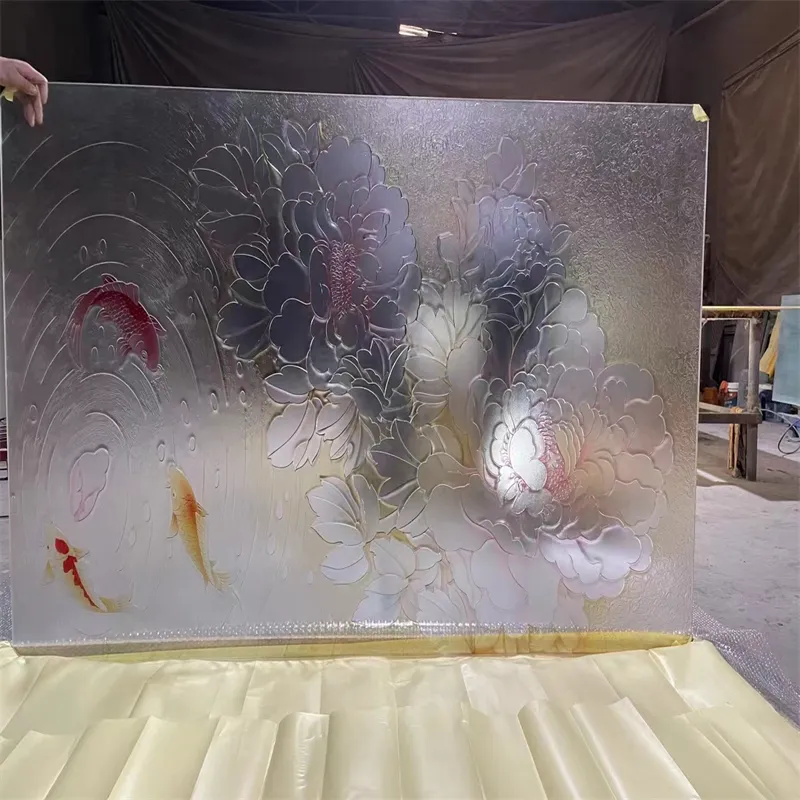11 月 . 01, 2024 19:23 Back to list
Innovative Applications of Curved Laminated Glass in Modern Architecture and Design
Curved laminated glass is a remarkable innovation that has gained traction in various architectural and design applications. Combining aesthetics with functionality, this material provides a unique solution for modern construction and interior design needs. Its versatility is particularly evident in buildings that require both structural integrity and visual appeal.
Laminated glass consists of two or more layers of glass that are bonded together using a durable interlayer, often made from polyvinyl butyral (PVB) or ethylene-vinyl acetate (EVA). This process not only enhances the strength of the glass but also improves its safety. In the event of breakage, the laminated layers hold the glass shards in place, reducing the risk of injury and maintaining the integrity of the structure. This makes curved laminated glass an excellent choice for environments where safety is a priority.
One of the standout features of curved laminated glass is its ability to bend and shape, allowing for the creation of striking architectural elements. Architects often leverage this capability to design sweeping façades, elegant canopies, and seamless skylights that enhance the overall aesthetic of a building. The curvature adds a dynamic quality to the design, creating a sense of movement and flow, which can transform otherwise mundane spaces into inspiring areas.
Moreover, the visual clarity of laminated glass can be customized to suit different projects. Manufacturers can produce glass in various tints, textures, and coatings, which not only influence the appearance of the glass but also its energy efficiency. For example, tinted glass can help reduce glare and heat build-up inside buildings, contributing to a more comfortable indoor environment. Additionally, low-emissivity coatings can significantly enhance thermal performance, making curved laminated glass an eco-friendly option for contemporary structures.
curved laminated glass

The installation process of curved laminated glass, however, requires precision and expertise. Since the glass is often custom-made to fit specific architectural designs, accurate measurements and careful handling during the installation are paramount. Specialized mounting systems are also crucial to support the unique shape of the glass, ensuring that it maintains structural integrity under various loads and conditions.
In increasingly eco-conscious times, curved laminated glass also supports sustainability efforts in building design. Its durability and energy-efficient properties contribute to lower energy consumption, which is essential in reducing a building’s overall carbon footprint. Furthermore, many manufacturers of laminated glass prioritize sustainable practices in their production processes, from sourcing raw materials to minimizing waste.
In conclusion, curved laminated glass stands out as a multifaceted material in the realms of architecture and design. Its combination of safety, aesthetic flexibility, and energy efficiency makes it a favored choice for modern construction projects. As architects and designers continue to push the boundaries of creativity, the demand for innovative materials like curved laminated glass will likely grow, leading to even more breathtaking and sustainable architectural advancements in the years to come. Whether it’s in commercial buildings, residential homes, or public spaces, the impact of curved laminated glass is both profound and inspiring, marking a significant milestone in modern design.
-
Wired Glass: A Strong and Secure Glass Solution for Various Applications
NewsNov.04,2024
-
Tinted Glass: A Stylish and Functional Choice for Modern Homes
NewsNov.04,2024
-
The Elegance and Versatility of Silver Mirrors
NewsNov.04,2024
-
The Advantages of Copper Free Mirrors
NewsNov.04,2024
-
Tempered Glass: A Reliable Choice for Modern Applications
NewsNov.04,2024
-
Pattern Glass: Stylish and Functional Glass for Modern Design
NewsNov.04,2024
Related PRODUCTS














